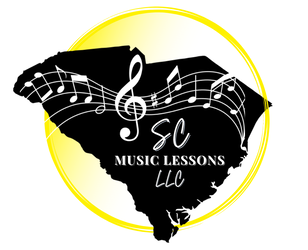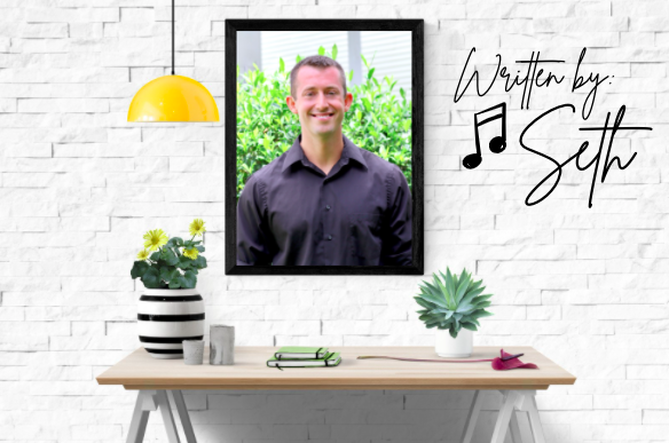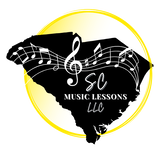|
When choosing a violin for your child, it's important to measure their arm, just like you would measure their foot size before buying shoes! Below is a simple video to help guide you through this easy, but necessary, process. After you've measured your child, refer to the sizing guide to find the correct size violin. The age column is only an average -- your child may fall into that category but it is possible for the child to need a different size violin depending upon their build.
1 Comment
Did you know "percussion" is actually a plural term? It not only includes drum set but also rudimental snare, timpani, keyboard percussion (e.g., marimba, xylophone, vibes, glockenspiel), and orchestral auxiliary instruments (e.g., triangle, tambourine, concert bass drum, crash cymbals), and more! Drummers are a type of percussionist who can choose different areas of focus:
Any drummer will need to invest in having their own drum set and accessories for practice during the week. Without applying the information learned at the lesson during the week, progress will be stunted. Drummers who practice progress more quickly! When searching for drums, we know the options can become overwhelming! We also recognize that the quality of the instrument needed may change as a student progresses; therefore, we have shared multiple options at a variety of price points. Our percussion instructor, Kyle, who has his masters degree in percussion performance, has shared his expertise and recommendations below in order to help you make the right decision for your needs! To note, this post contains affiliate links for items that we recommend and use. We may earn a small commission from Amazon at no cost to you. Types of DrumsThere are two basic types of drum kits. For each type, we have shared pros and cons to consider when choosing the right instrument for your student and your family. ACOUSTIC DRUMS Acoustic instruments make sound without the use of electricity or amplification.
Pros
Cons
Any student wanting to learn an instrument will need to invest in having their own instrument for practice during the week. Without applying the information learned at the lesson during the week, progress will be stunted. Students who practice progress more quickly! When searching for guitars, we know the options can become overwhelming! We also recognize that the quality of the instrument needed may change as a student progresses; therefore, we have shared multiple options at a variety of price points. In this post our guitar instructor, Seth, has shared his expertise in order to help you make the right decision for your needs! To note, this post contains affiliate links for items that we recommend and use. We may earn a small commission from Amazon at no cost to you. Types of GuitarsThere are three basic types of guitars: 1. Acoustic Guitars are often the most popular choices for students beginning guitar lessons! Acoustic guitarists can share music as a soloist or as part of a band. Acoustic guitars can be played without external amplification, however, many acoustic guitars have a featured to allow them to be amplified, if desired. 2. Classical Guitars are similar to acoustic guitars but more often used for Flamenco and Spanish music. The body can be slightly larger and typically uses nylon strings vs. steel strings. 3. Electric Guitars require external amplification in order to be heard. They are most often used as part of a band in a variety of genres including Jazz, Blues, Soul, Funk, Pop, Rock, Country and Metal. Our recommendations focus on acoustic and electric options for both children and adults! If you need a left-hand guitar recommendation, send us an email at [email protected]. Why are the Prices Different?When buying a guitar, appearance is only part of the price increase on a guitar. The main reasons for price increases are:
Any student wanting to learn an instrument will need to invest in having their own instrument for practice during the week. Without applying the information learned at the lesson during the week, progress will be stunted. Students who practice progress more quickly! When searching for pianos, we know the options can become overwhelming! We recognize that the quality of the instrument needed may change as a student progresses; therefore, we hope the pros and cons we have shared will help you make the right decision for your needs! For purchasing a piano, we highly recommend visiting Fox Music House Inc. in North Charleston. They have acoustic, digital, and electronic keyboards available for purchase and rent! Types of PianosThere are three basic types of pianos: 1. Acoustic Pianos are the largest and most expensive but also the best when it comes to developing piano skills. Acoustic pianos include upright and grand designs.
2. Digital Pianos are smaller, more portable, less expensive, and many are able to closely mirror the sound and touch of acoustic pianos. Digital pianos can be purchased with a cabinet-style console, enhancing the aesthetics and mimicking an acoustic instrument. 3. Electronic Keyboards are the most cost-effective option, however, sometimes they include less keys (which limits repertoire) and they may not have resistance (weighted-keys). These differences make transferring skills to a digital or acoustic piano more difficult. For each type of piano, we have shared pros and cons to consider when choosing the right instrument for your student and your family! "Three things are necessary for happiness: a faithful wife, a well-padded chair, and a harp well-tuned." - An Irish TriadWe are grateful to have Lowcountry instructors, Kim (celtic harpist) and Mallory (pedal harpist) on our team! In this blog post, they have shared information that they hope will help you choose which instrument is the best fit for you. As always, feel free to contact us if you have additional questions. We are here to help! Definition:Celtic Harp (Folk Harp or Lever Harp): "A smaller harp with wire and nylon strings, used in the folk and early music of Scotland and Ireland." Pedal Harp (Concert Harp or Classical Harp): "A larger and technologically modern harp, designed primarily for use in art music." "Musicians who play Celtic harps are called "harpers" while those who play Pedal harps are called "harpists". The word “harp” comes from Old Norse, Anglo-Saxon, or Old German words meaning “to pluck”. Appearance:
In these videos from Lowcountry Pianist & Company LLC, you can see some of the differences in appearance of each instrument. Pedal harps are larger than celtic harps.
Additionally, changing the pitch (making strings sound lower or higher) is controlled by pedals on the pedal harp (located at the base of the instrument) while the celtic harp uses levers (located at the top of the instrument). For example, imagine a piano keyboard; there are white and black strings. In the olden times only the white notes could be plucked unless the harper re-tuned the string for a certain song, whereas now the harper / harpists can change their levers or pedals and essentially then have the black keys on the piano available also. |
CONTACT
Holly Slice, Owner
Email: [email protected]
Phone: 843-310-1083
Visit Our Sister Site:
Lowcountry Pianist & Company LLC
Email: [email protected]
Phone: 843-310-1083
Visit Our Sister Site:
Lowcountry Pianist & Company LLC
LEGAL
© 2024 SC Music Lessons LLC
All Rights Reserved.
All Rights Reserved.







 RSS Feed
RSS Feed